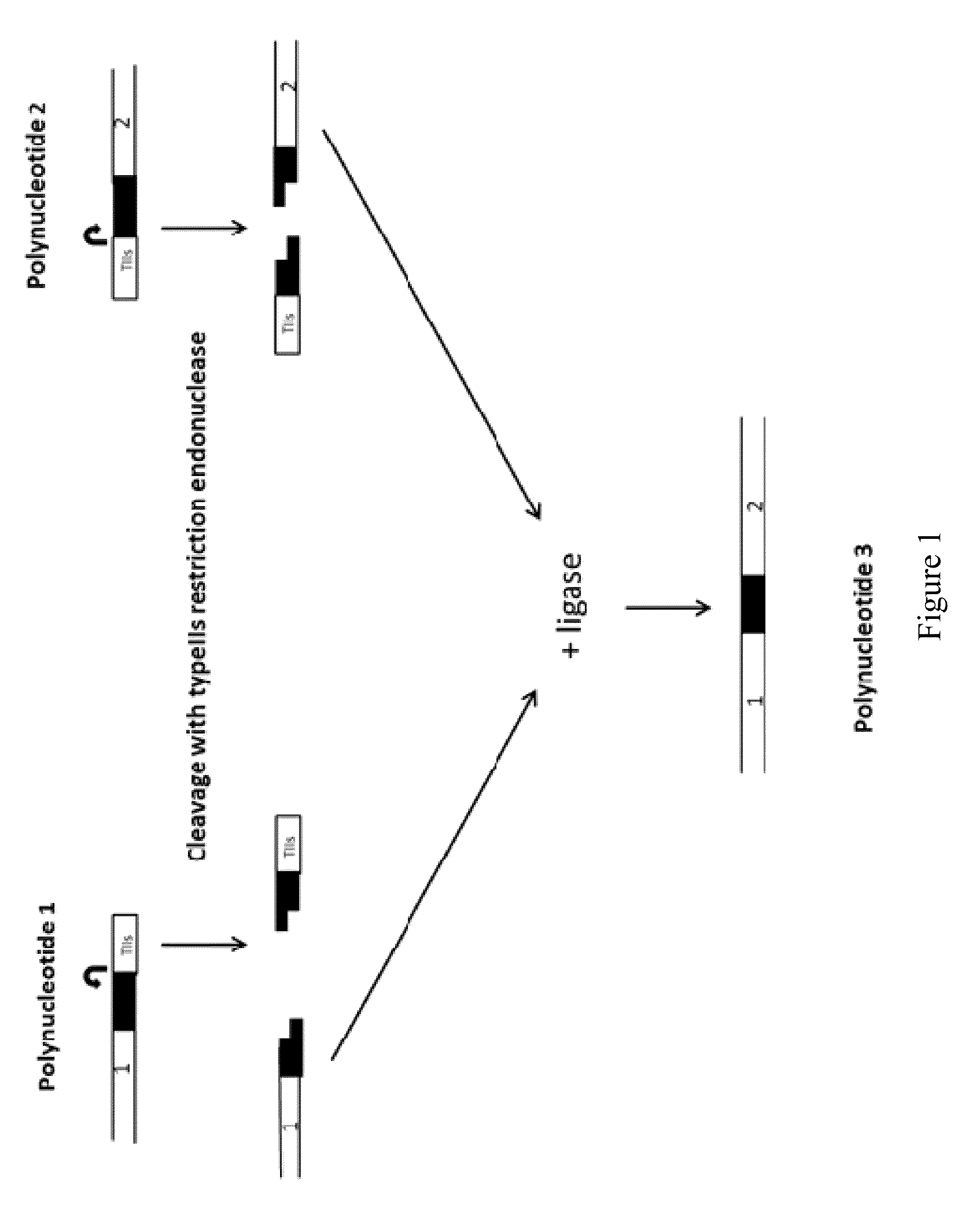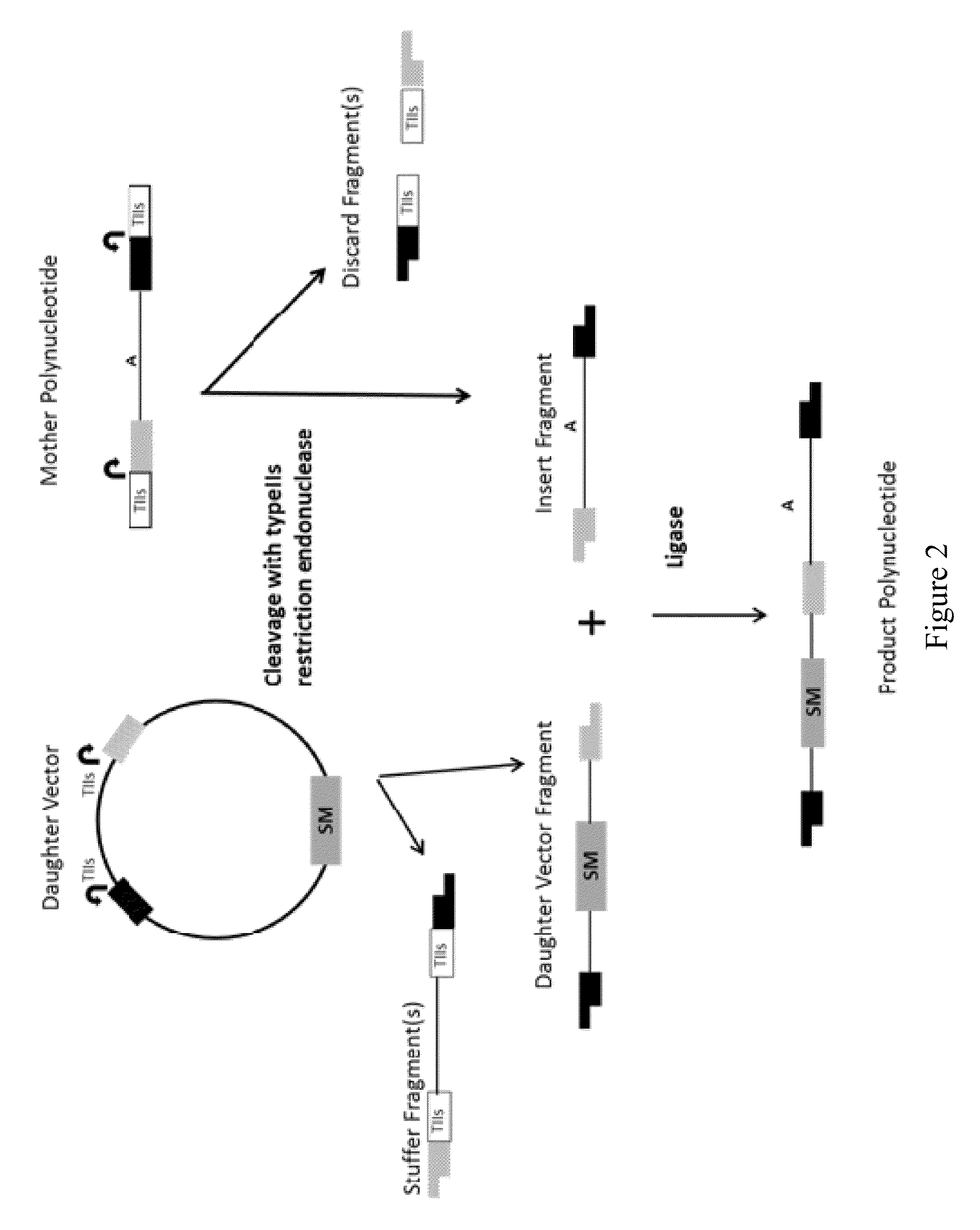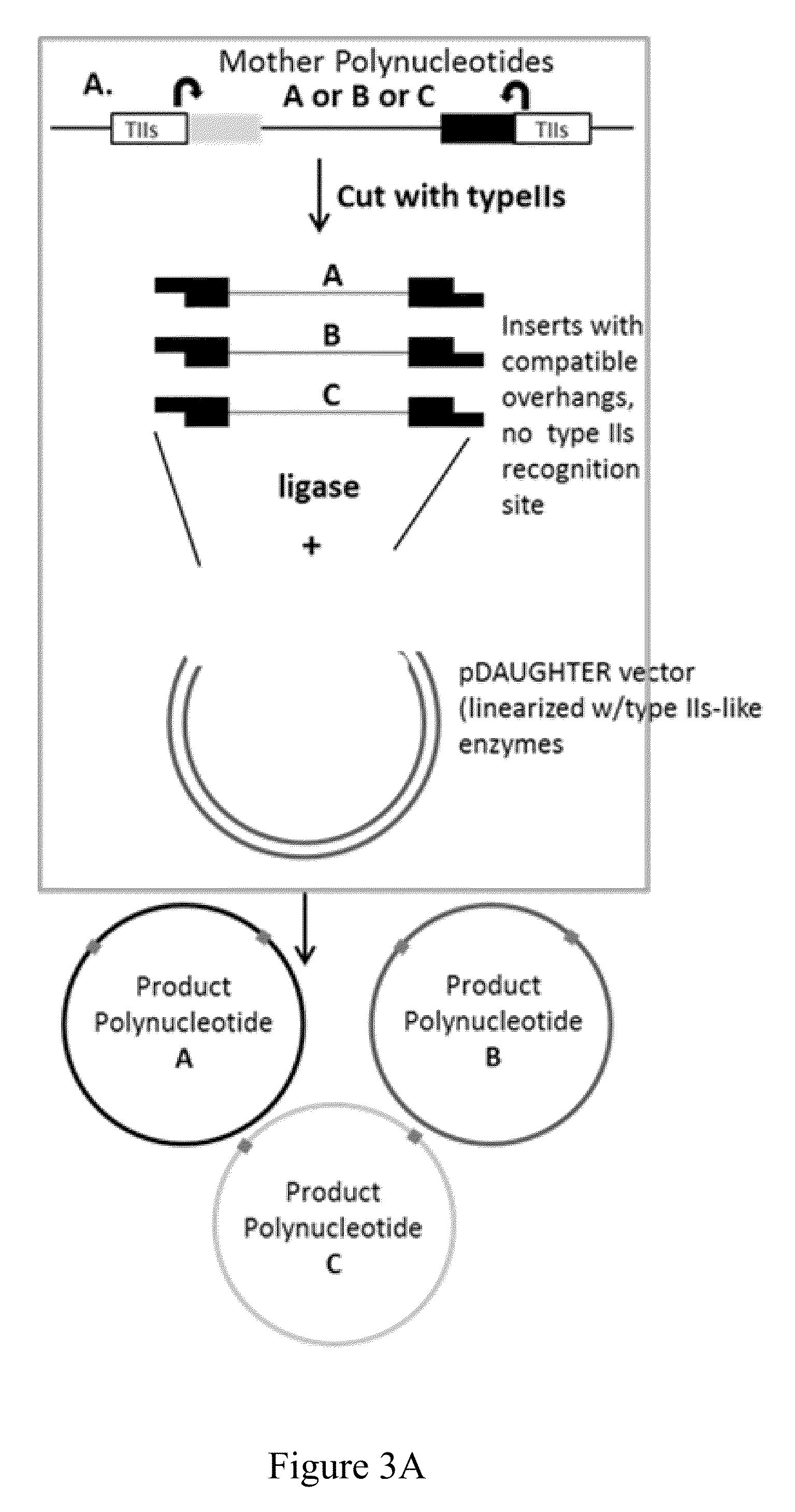Methods, compositions and kits for a one-step DNA cloning system
a cloning system and dna technology, applied in the field of methods, can solve the problems of toxic genes, long fragments, toxic genes, etc., and achieve the effects of improving yield, facilitating protein purification, and facilitating tracking of proteins in cells
- Summary
- Abstract
- Description
- Claims
- Application Information
AI Technical Summary
Benefits of technology
Problems solved by technology
Method used
Image
Examples
Embodiment Construction
5.1 Brief Description
[0036]The first aspect of this disclosure is a method of joining two or more polynucleotides to form a product polynucleotide. In one embodiment, the method comprises incubating a mixture for a predetermined length of time, wherein the mixture comprises a) a first polynucleotide comprising a selectable marker, b) a second polynucleotide, other than the first polynucleotide, comprising a first typeIIs recognition sequence and a second typeIIs recognition sequence, c) a first typeIIs restriction endonuclease that recognizes the first typeIIs recognition sequence and cleaves the second polynucleotide to produce a first end, and a second typeIIs restriction endonuclease that recognizes the second typeIIs recognition sequence and cleaves the second polynucleotide to produce a second end, and wherein the first end is not complementary to or is not compatible with the second end, and d) a DNA ligase.
[0037]In one embodiment, the second polynucleotide of the first aspect...
PUM
| Property | Measurement | Unit |
|---|---|---|
| temperature | aaaaa | aaaaa |
| time | aaaaa | aaaaa |
| time | aaaaa | aaaaa |
Abstract
Description
Claims
Application Information
 Login to View More
Login to View More - R&D
- Intellectual Property
- Life Sciences
- Materials
- Tech Scout
- Unparalleled Data Quality
- Higher Quality Content
- 60% Fewer Hallucinations
Browse by: Latest US Patents, China's latest patents, Technical Efficacy Thesaurus, Application Domain, Technology Topic, Popular Technical Reports.
© 2025 PatSnap. All rights reserved.Legal|Privacy policy|Modern Slavery Act Transparency Statement|Sitemap|About US| Contact US: help@patsnap.com



